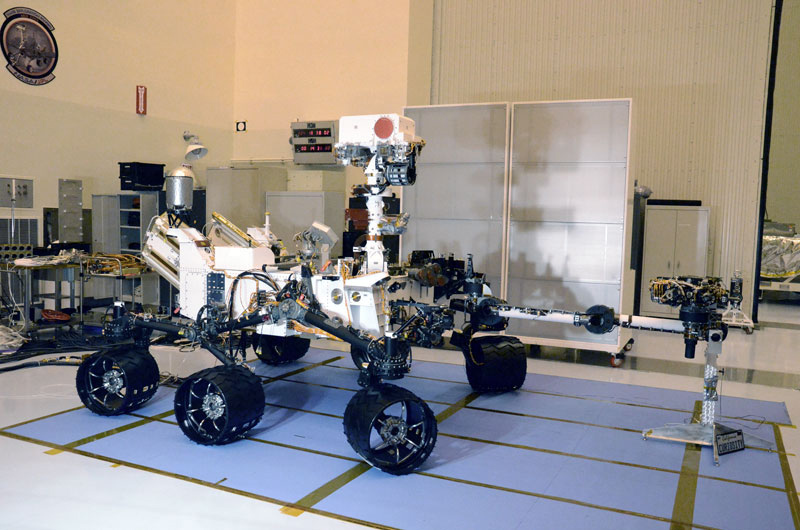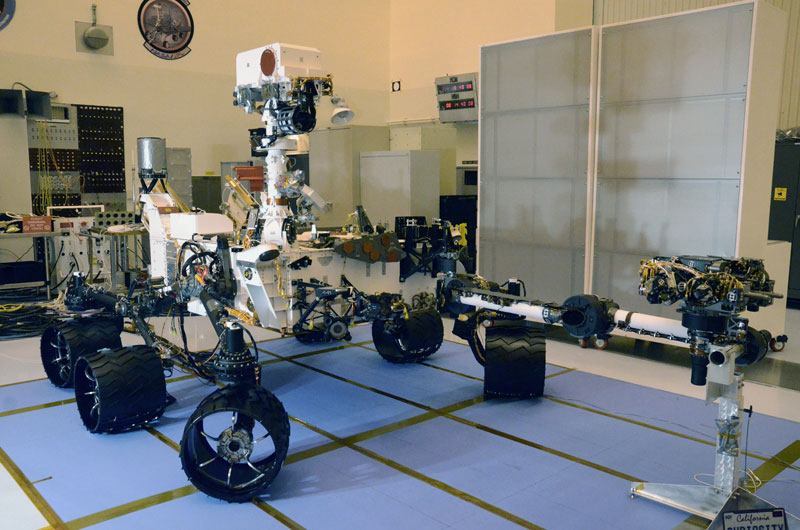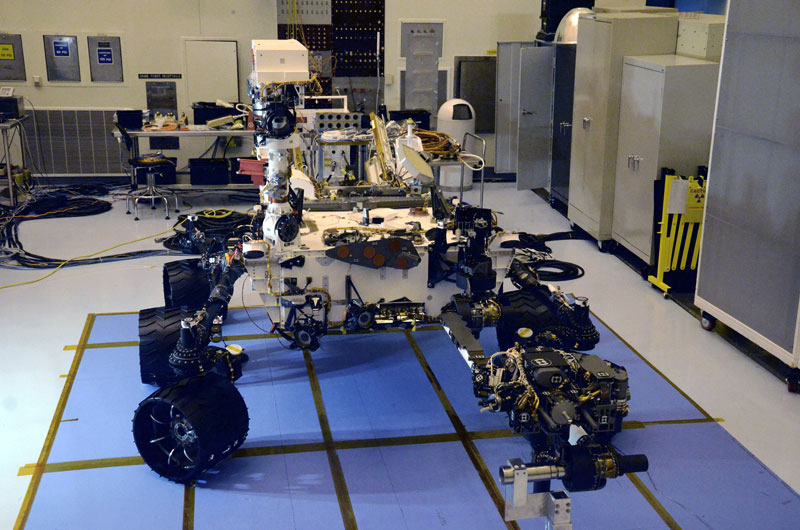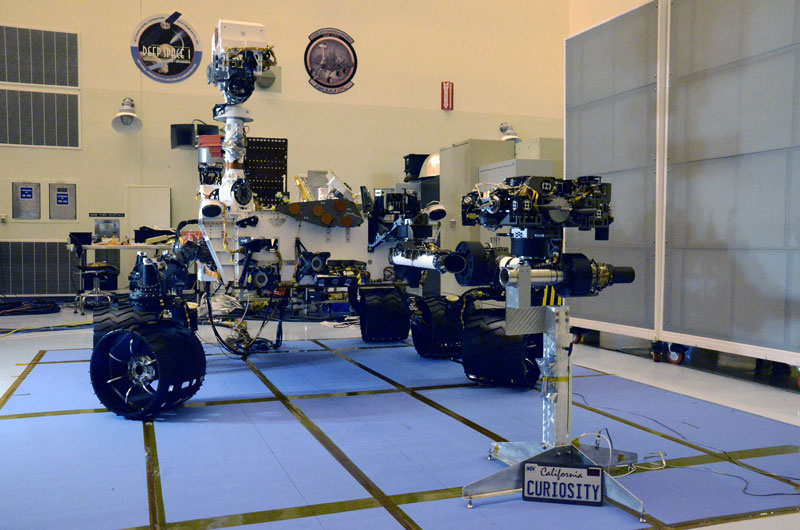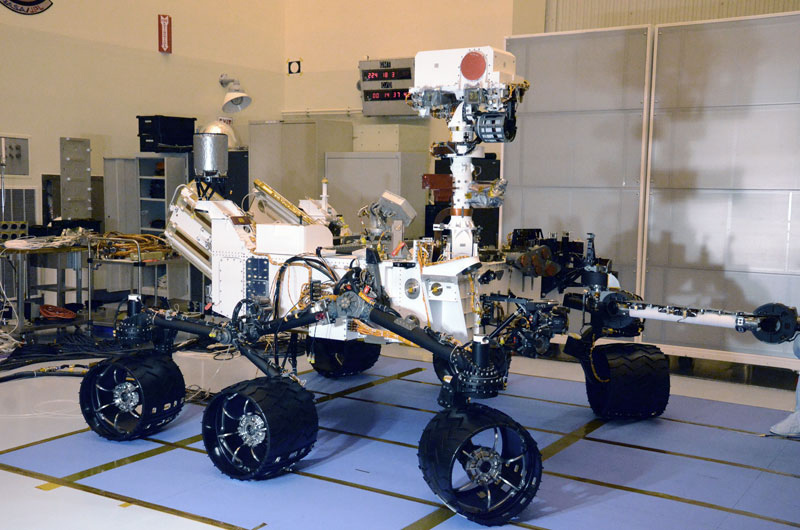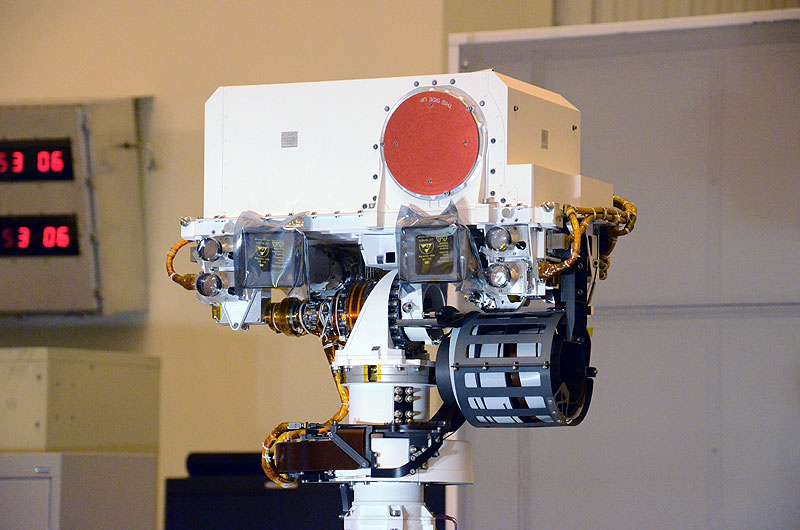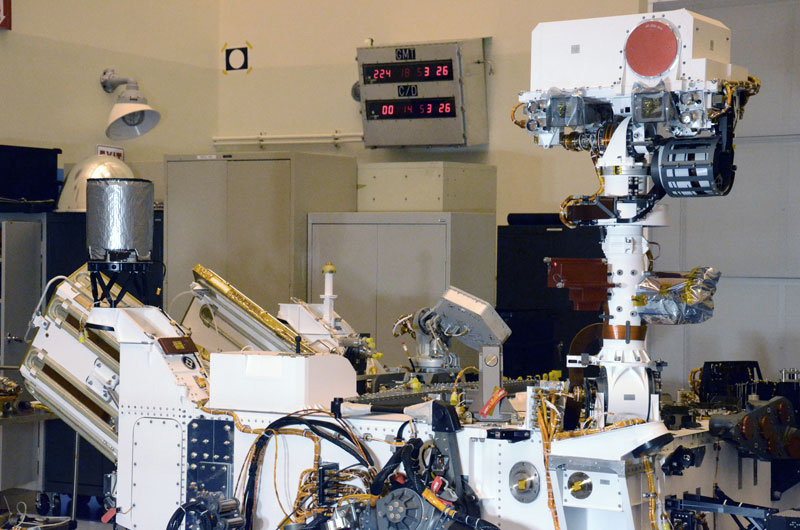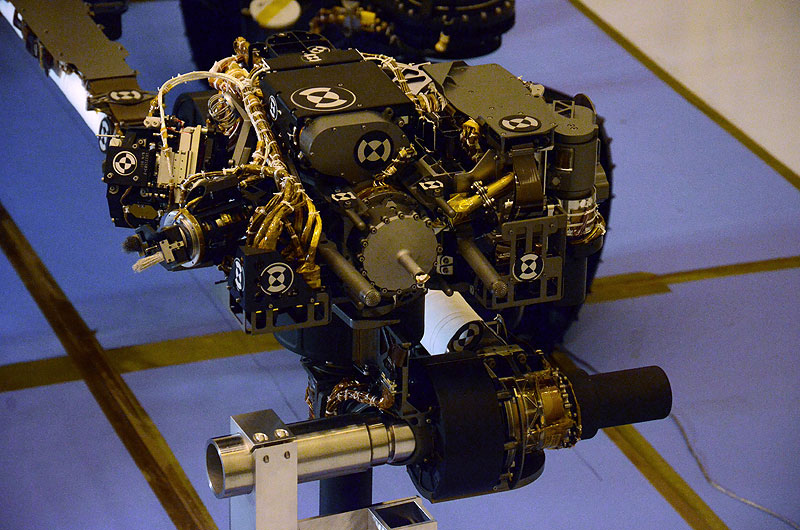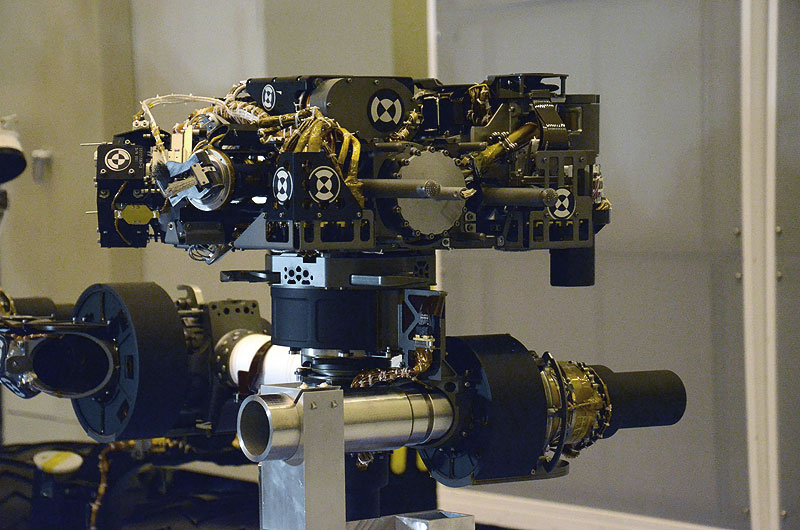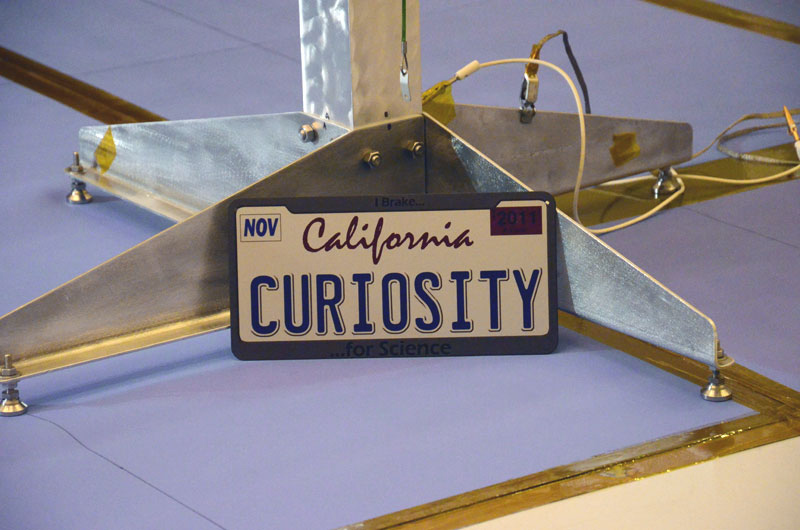Photo Gallery: Last Look at Mars Rover Curiosity Before Launch
NASA's Mars Science Laboratory Fully Deployed
NASA's Mars Science Laboratory (MSL), named Curiosity, as seen fully deployed on Friday, Aug. 12, 2011 during a media photo opportunity inside Kennedy Space Center's Kennedy's Payload Hazardous Servicing Facility in Florida.
Curiosity Showing Wheels and Mast Fully Deployed
The next time the Curiosity Mars Science Laboratory be in this same configuration — wheels deployed and remote sensing mast and instrument-tipped arm extended — will be after it is deposited on the surface of Mars in August 2012.
Curiosity Side View
At 10 feet (3 meters) long, Mars Science Laboratory has been likened to the size of a Mini Cooper. Curiosity is about twice as long and five times as heavy as NASA's twin Mars Exploration Rovers, Spirit and Opportunity, which launched in 2003 and are still on the Martian surface.
Curiosity Mars Rover Showing Payload
Curiosity will carry the most advanced payload of scientific gear ever used on Mars' surface, a payload more than ten times as massive as those of earlier Mars rovers. MSL's assignment: Investigate whether conditions have been favorable for microbial life and for preserving clues in the rocks about possible past life.
Curosity Rover Right Side
The Curiosity Mars Science Laboratory (MSL) inherited many design elements from the earlier Mars Exploration Rovers Spirit and Opportunity, including six-wheel drive, a rocker-bogie suspension system and cameras mounted on a mast to help the mission's team on Earth select exploration targets and driving routes. Unlike earlier rovers, Curiosity carries equipment to gather samples of rocks and soil, process them and distribute them to onboard test chambers inside analytical instruments.
Curiosity's "ChemCam"
Curiosity's "ChemCam" (protected here by the red cover) will fire a laser to analyze the composition of vaporized materials from areas smaller than 1 millimeter on the surface of rocks and soils. ChemCam will also use the laser to clear away dust from Martian rocks.
Curosity's Antennas
Curiosity is equipped with both low-gain and high-gain antennas to serve as both its "voice" and its "ears." Not only will the rover be able to send messages directly to Earth, but it will also be able to uplink information to other spacecraft orbiting Mars, utilizing mainly the Mars Reconnaissance Orbiter as a messenger who can pass along news to Earth for the Mars-bound rover. The orbiter can also send messages to the rover. In this photo, the high-gain antenna is the hexagon-shape instrument in the center faced away from the camera. The low-gain antenna is the coffee-can shape instrument mounted on the platform at the rover's rear.
Breaking space news, the latest updates on rocket launches, skywatching events and more!
Curiosity's "Hand"
At the end of Curiosity's seven-foot arm is a turret, shaped like a cross. This turret, a hand-like structure, holds various tools that can spin through a 350-degree turning range. At the tip of the arm is the turret structure on which five devices are mounted. Two of these devices are in-situ or contact instruments known as the Alpha Particle X-ray Spectrometer (APXS) and the Mars Hand Lens Imager. The remaining three devices are associated with sample acquisition and sample preparation functions.
Curiosity's Mars Hand Lens Imager
Mounted at the end of Curiosity's arm, the Mars Hand Lens Imager (MAHLI) will take extreme close-up pictures of rocks, soil and, if present, ice, revealing details smaller than the width of a human hair. It will also be able to focus on hard-to-reach objects more than an arm's length away. Also mounted on the arm, the Alpha Particle X-ray Spectrometer (APXS) will determine the relative abundances of different elements in rocks and soils.
Curiosity's Wheels
The Mars Science Laboratory has six wheels, each with its own individual motor. The wheels are designed to roll the rover over obstacles up to 25 inches (65 centimeters) high and to travel distances up to 660 feet (200 meters) per day on the Martian terrain.
The Martians Won't Get a Kick out of This Vanity License Plate
This mock license plate won't fly with Curiosity to Mars but represents that NASA's Jet Propulsion Laboratory in Pasadena, Calif., manages the Mars Science Laboratory mission.
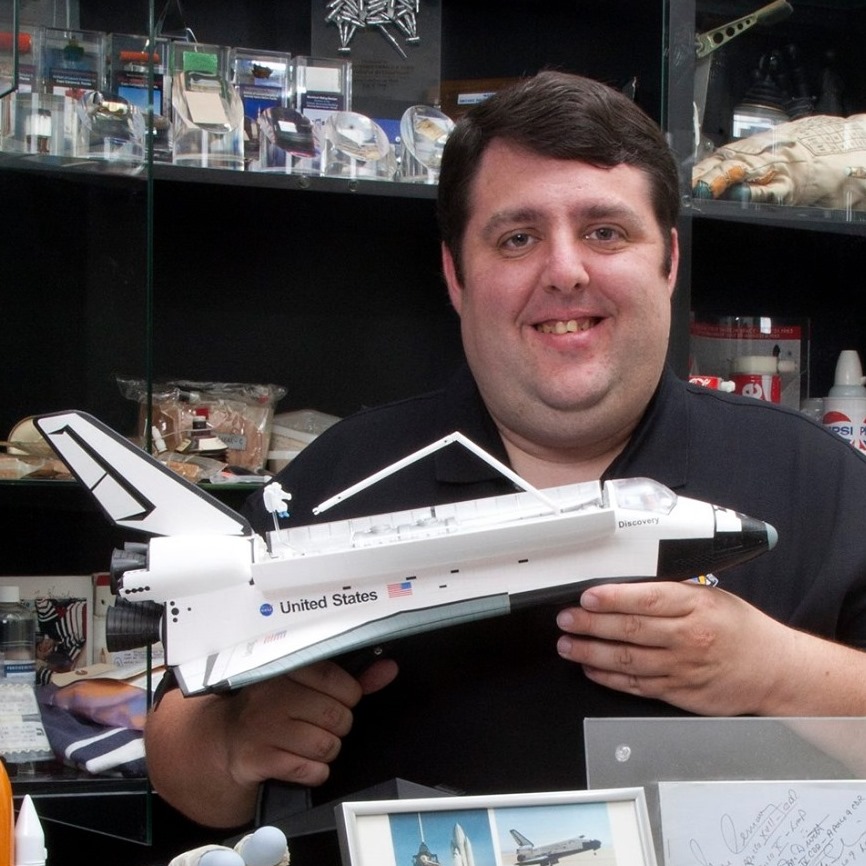
Robert Pearlman is a space historian, journalist and the founder and editor of collectSPACE.com, a daily news publication and community devoted to space history with a particular focus on how and where space exploration intersects with pop culture. Pearlman is also a contributing writer for Space.com and co-author of "Space Stations: The Art, Science, and Reality of Working in Space” published by Smithsonian Books in 2018.
In 2009, he was inducted into the U.S. Space Camp Hall of Fame in Huntsville, Alabama. In 2021, he was honored by the American Astronautical Society with the Ordway Award for Sustained Excellence in Spaceflight History. In 2023, the National Space Club Florida Committee recognized Pearlman with the Kolcum News and Communications Award for excellence in telling the space story along the Space Coast and throughout the world.
